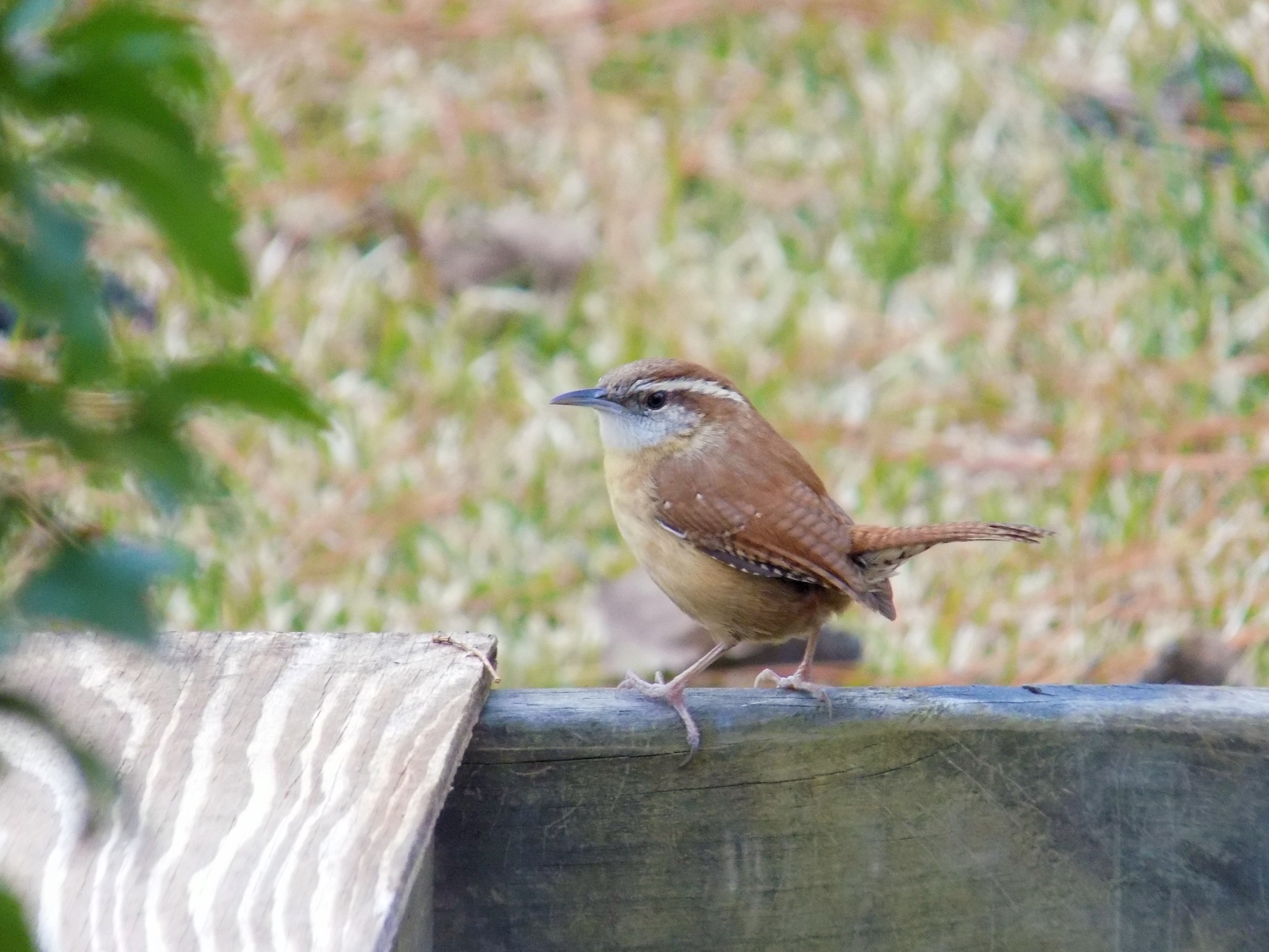
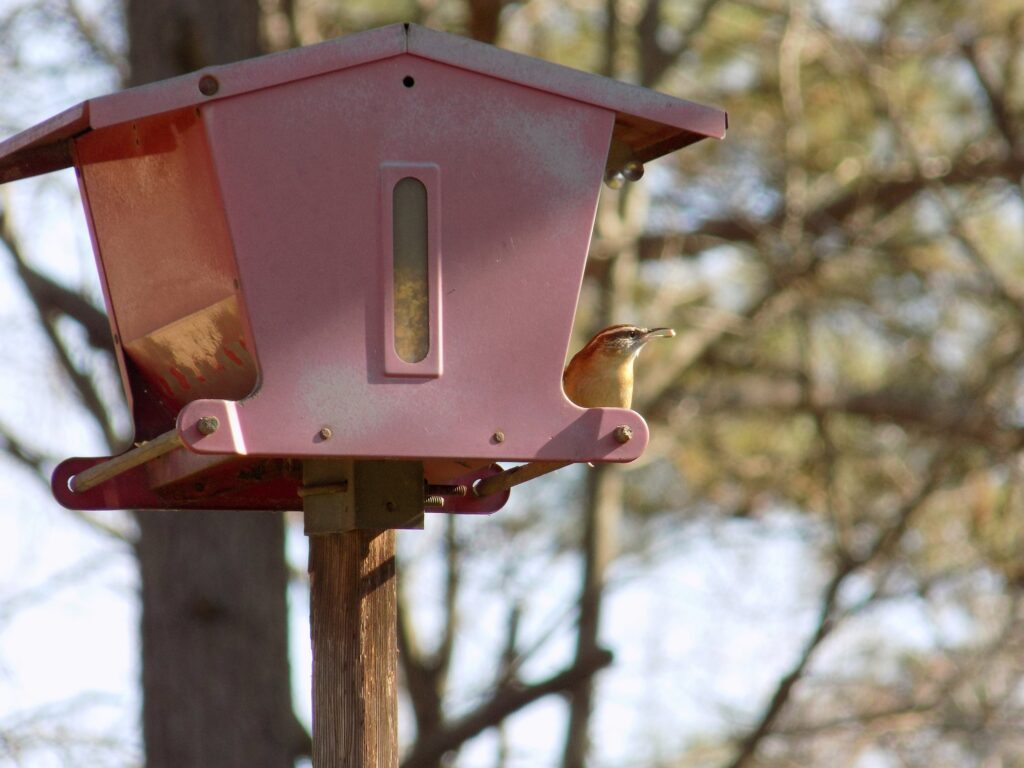
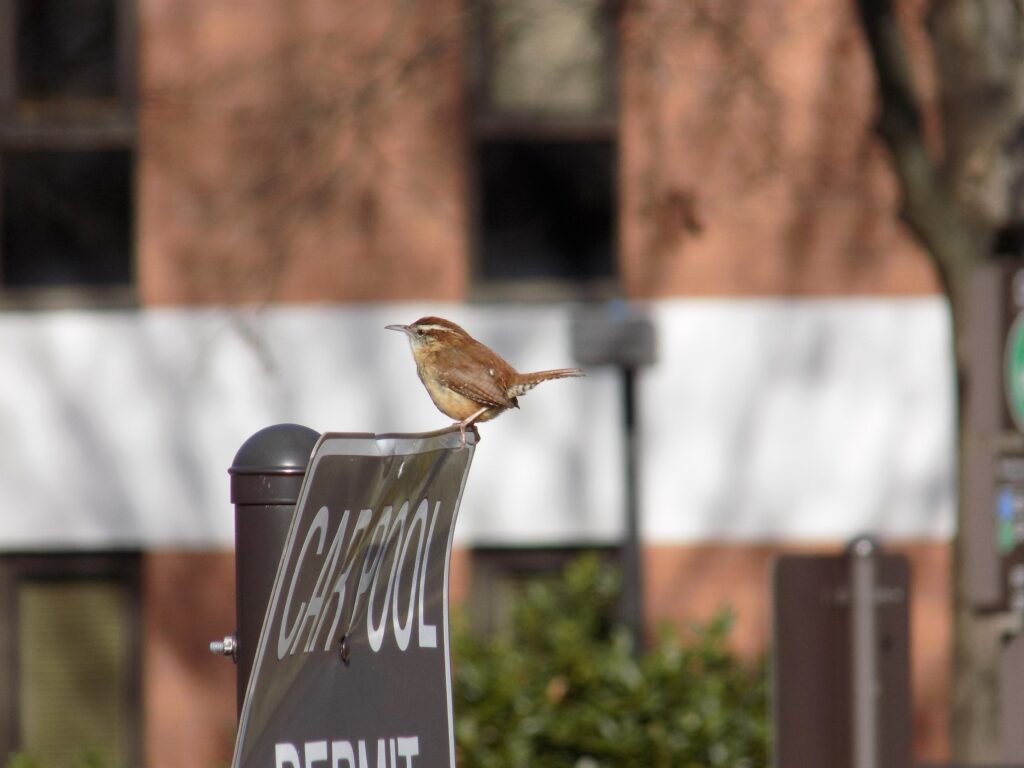
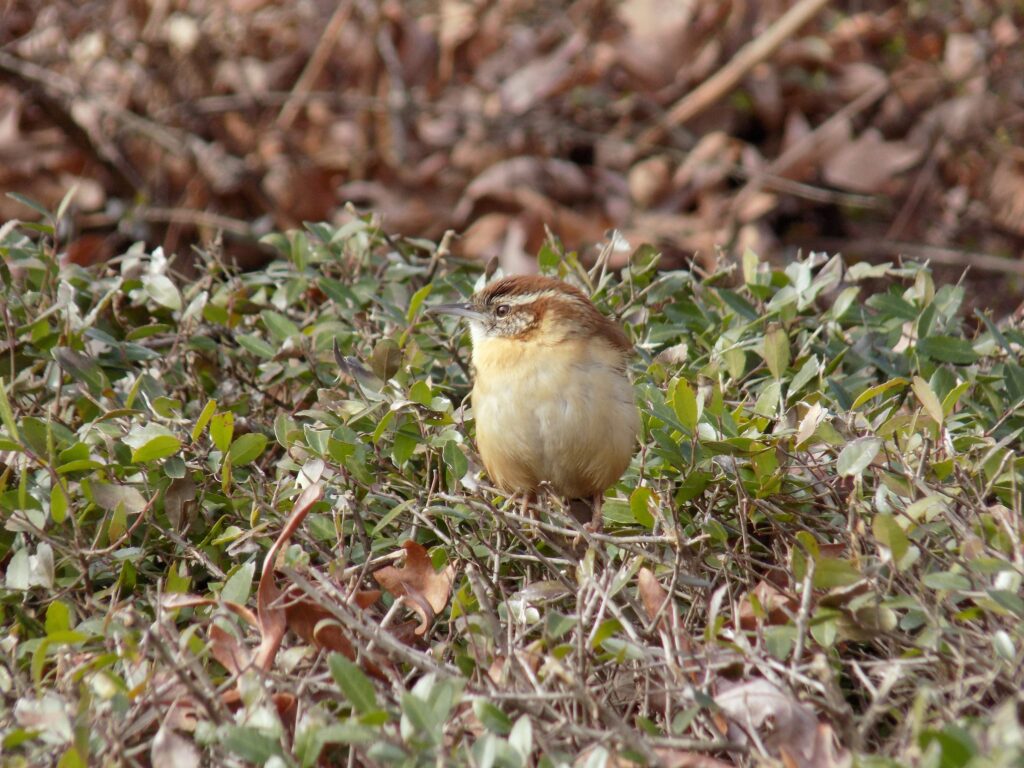
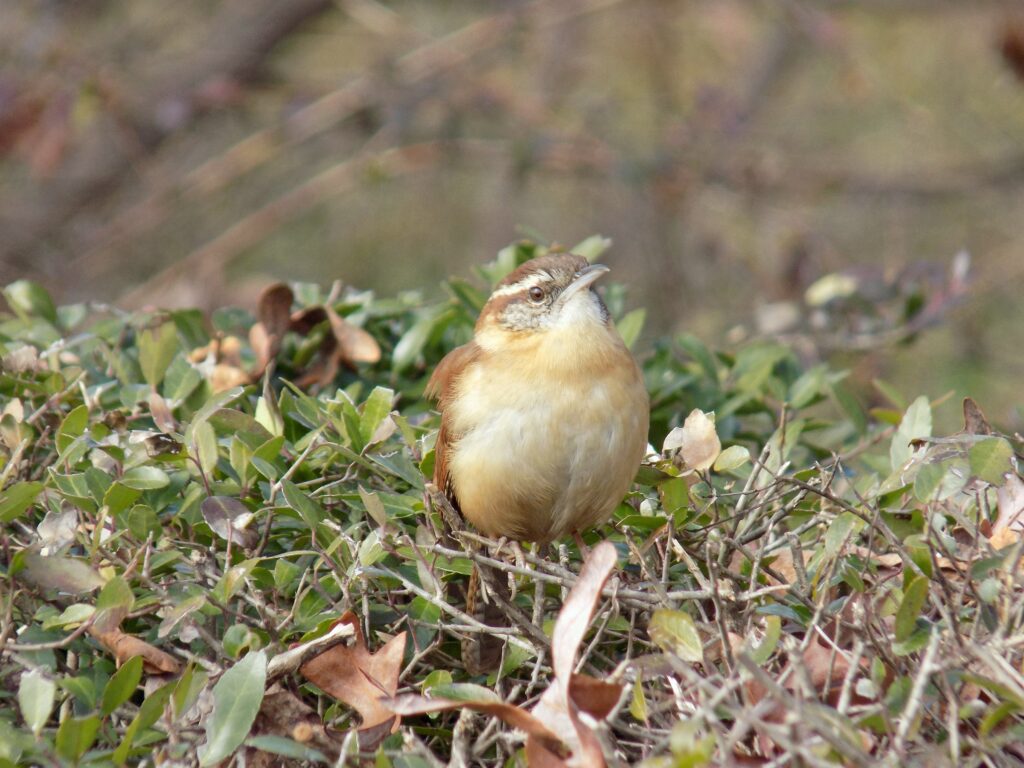
For Flora and Fauna Friday this week we have the bold and boisterous bug-eating bird born beneath brushpiles, the Carolina Wren (Thryothorus ludovicianus).
The Carolina Wren is the state bird of South Carolina and one of my personal favorite species. They are small, stocky, energetic, curious, and loud. A ball of condensed gregariousness. The Carolina Wren sports a warm brown pelage barred with black, flecked with white, and suffused with smoldering rufous tones. A stern white eyebrow mirrors a longish decurved bill, both anchored beside intelligent mocha eyes.
Carolina Wrens are small songbirds at only 5 inches in length. What they lack in size they make up for with personality. They are vociferous vocalists, singing, calling, and chattering with prodigious pipes that seem beyond their frame. They can often be heard (typically well before they’re seen) perched atop a shrub or fencerow projecting a rhythmic song into the air or bobbbing-and-weaving while spitting short calls at the surrounding landscape. Their songs are highly variable but typically consist of a three-syllable phrase repeated four times but cut off abruptly during the fourth repetition. The Onomatopoeias I’ve heard for this phrase include “deepwater”, “teakettle”, and “cheeseburger” but the spoken word changes from bird to bird, day to day, and song to song. Breeding pairs will often perform duets where the male begins his song and the female will provide chattering back up vocals mid-verse. Carolina Wrens mate for life and don’t migrate. The pairs patrol a permanent territory throughout the year. They build nests in cavities or thick tangles of brush.
Carolina Wrens can often be seen bounding through brushpiles, flitting under forests, hopping beneath hedges, pecking around patios, and sidling down sidewalls. They are in constant motion patrolling eaves, bushes, and crevices for spiders, crickets, caterpillars, and beetles. They will occasionally visit birdfeeders, mostly out of curiosity, but will occasionally dine of cracked corn and suet. They are accomplished generalists found throughout the eastern United States in forested habitats, scrubland, woodlots, and suburbia. They have good spatial awareness compared to other songbirds and will frequently mosey into garages, porches, and sheds in search of spiders without becoming lost and trapped.